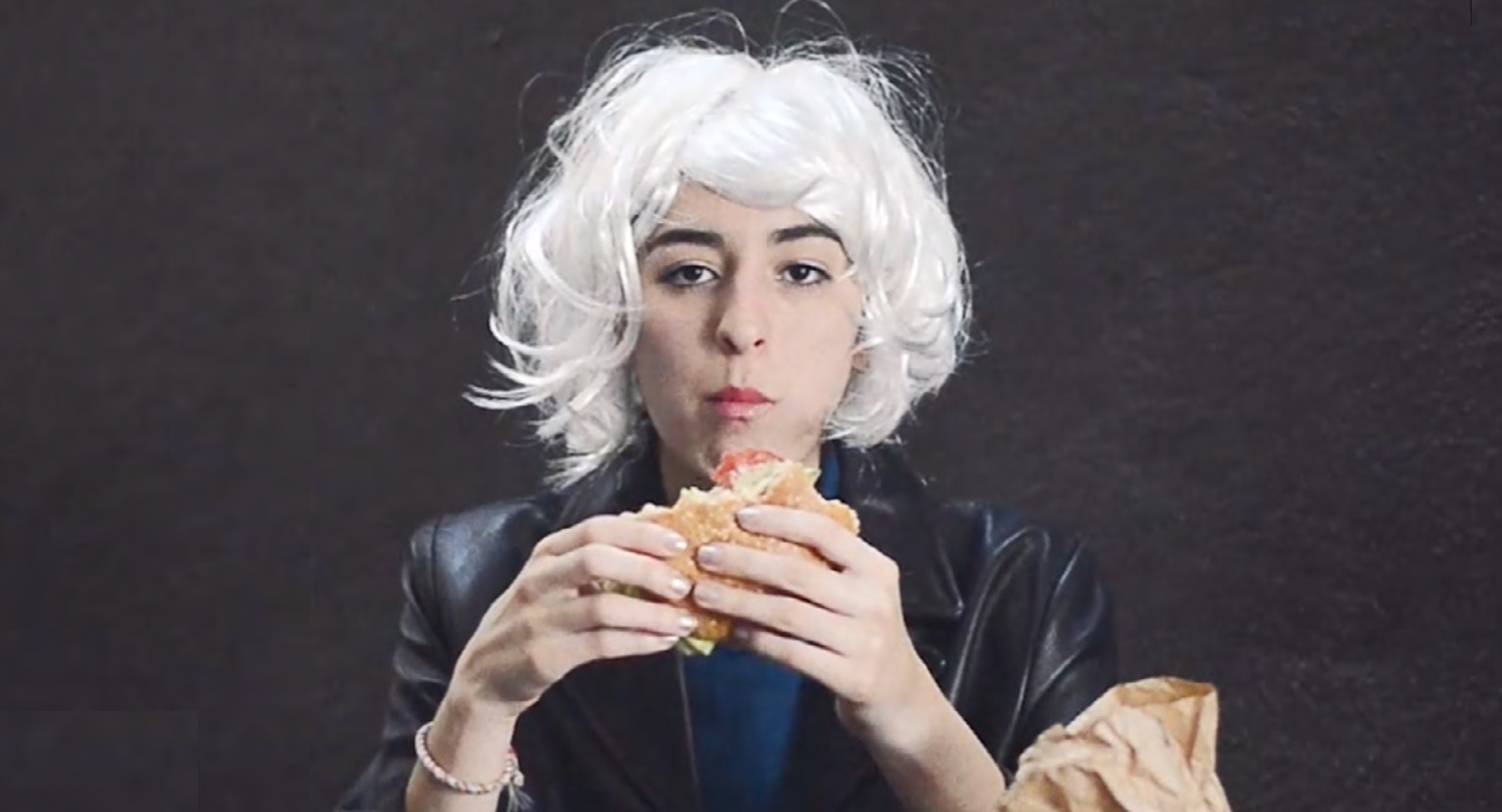
Review
A Cocktail for Passing Out. On Permanencia Voluntaria at Centro de la Imagen
by Bruno Enciso
Reading time
6 min
Permanencia Voluntaria is the first digital exhibition conceived by the Centro de la Imagen through its project PICS (the Spanish acronym for Platform for Contemporary Images). The curation, directed by César González-Aguirre, brings together the work of 21 artists who share a certain idea of the cult of the body, derived from latent creative manifestations in the nightlife of some of the country’s cities, as well as from certain movements of sexual dissidence. The show is housed in a PDF, available for download from the PICS website.
The project bears an approach to editorial design that not only frames the works, but also coats them entirely in a series of very specific visual and graphic values. The use of neon green and millennial pink, different kinds of typography, the thoughtful repetition of certain words and signs for purposes of emphasis, to mention some elements, function as guidelines for imagining what styles or imaginaries coexist around these works and this publication. By all means, the relation between design (including editorial, graphic, interior, and spatial) and works of art is complex and bears its own framework for discussion. Taking note of it here seeks to insinuate a drift towards the conversation about the work’s materiality, something that has been heightened with the pandemic. The exhibitions that I consume digitally, do they carry some kind of wrapping? If the book is an art exhibition, can I judge it by its cover?
The document contemplates some other things. On the one hand, it not only includes the curatorial text and a list of the works, but also a section of brief interviews with the artists on topics related to the pandemic and its effects on daily life. These interviews encourage a more convivial and personal reading of the participants’ work, avoiding any feeling of a mere registration document. They ask, for example, “How do you experience your identity during this pandemic?" Laura Álvarez responds: “Sometimes it’s hard to observe yourself without the filters that social media offer.”
In turn, two of the artists install their work within the empty spaces that the document itself offers, as if, say, they had drawn on the printed copy or left a street flyer in the middle of its pages. These gestures add on layers of meaning, so that the interaction with the document feels, although guided, a little saturated. Hence the aptness of suggesting voluntary permanence (permanencia voluntaria).
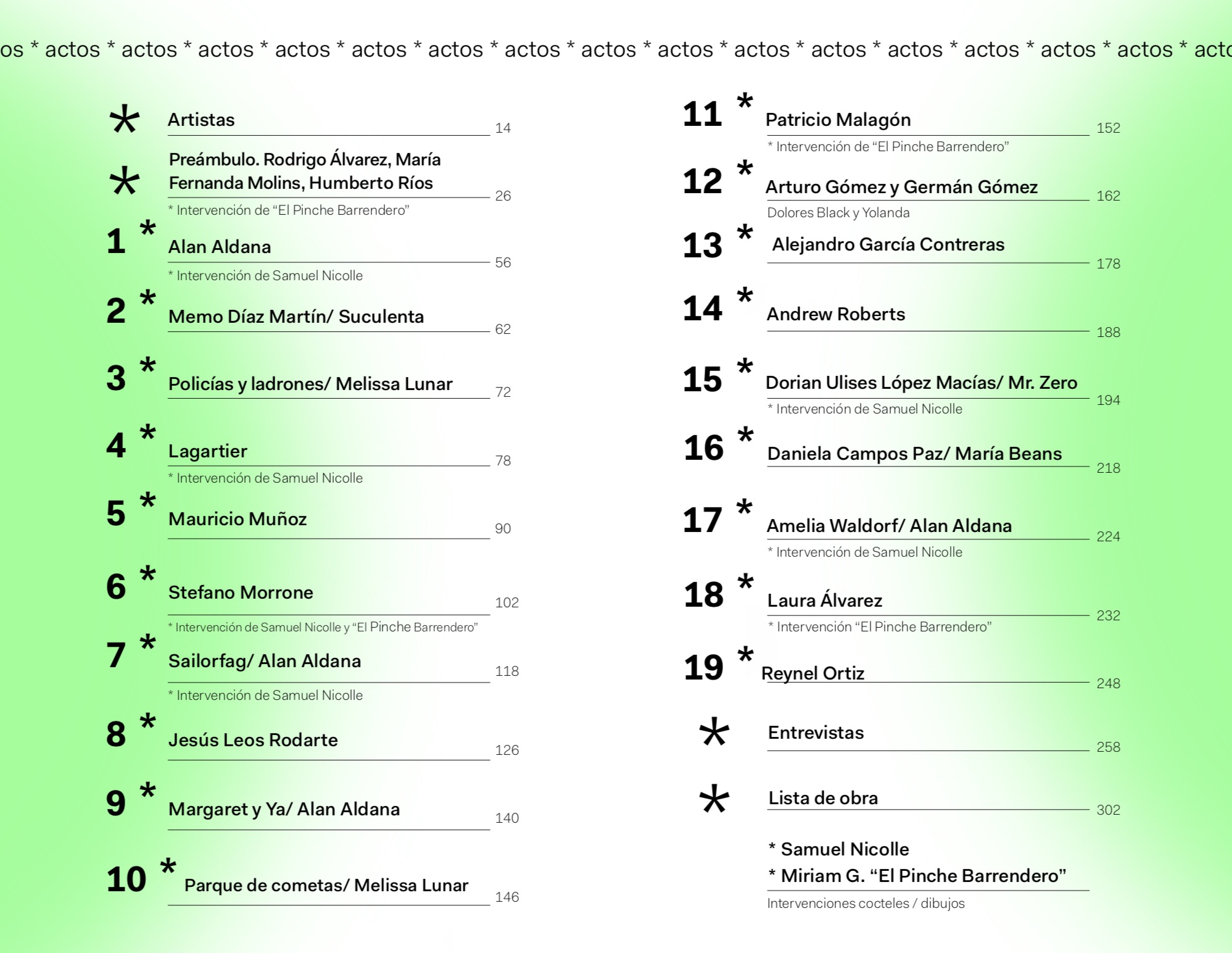
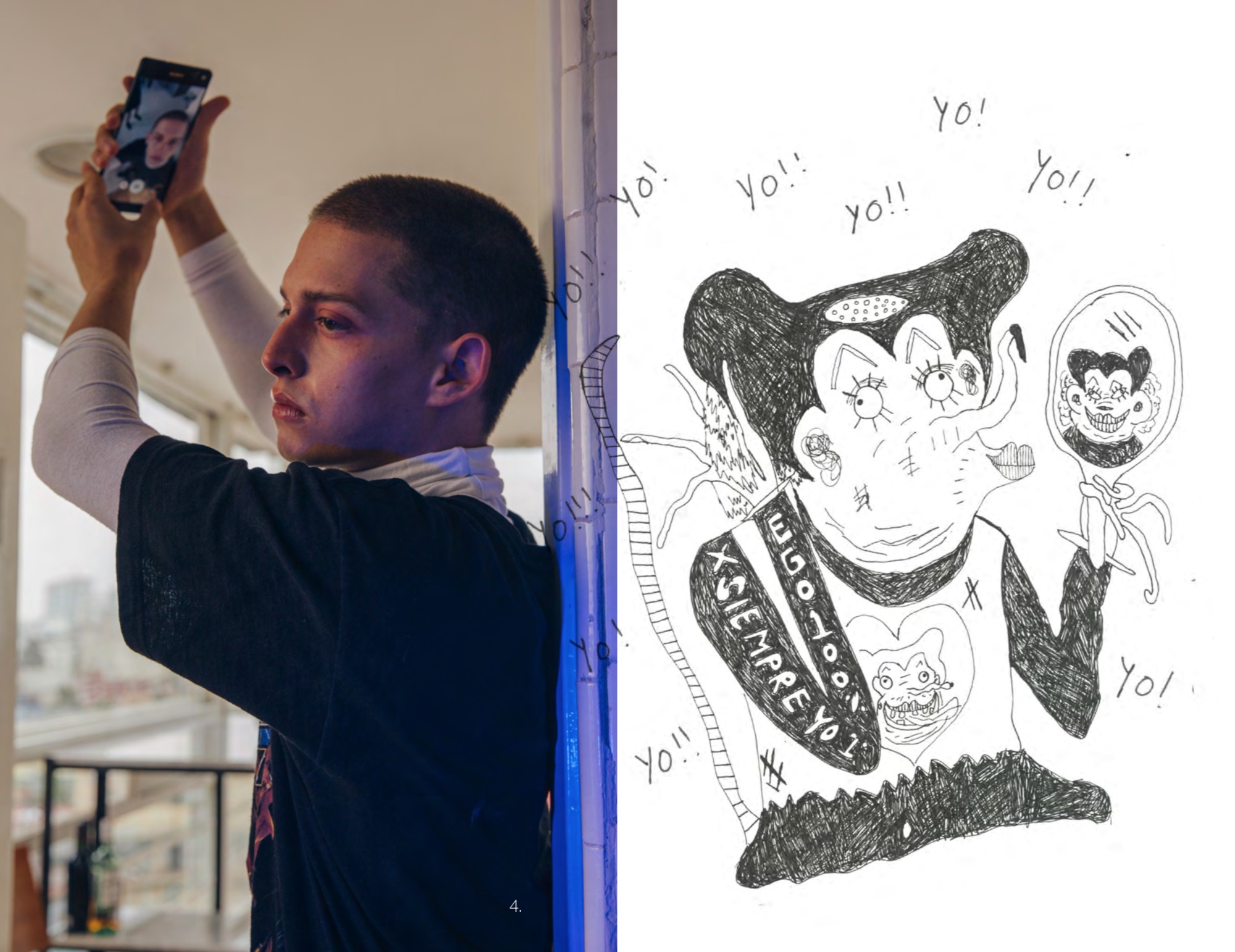
The selection of work is distributed across a preamble and 19 numbered acts that function as book chapters, not counting the two interventions that I just mentioned. The preamble announces, through photographs, that what we are about to witness derives from different ways of seeing and negotiating the body. Before starting with the acts, we are shown a curtain as a reminder that, in a pandemic-less reality, many of these images would inhabit a stage or a screen, that is, a place other than a book or a museum.
The 19 acts display looks and practices that combine fashion, drag, performance, animation, illustration, directing, and audiovisual production, as well as different media derived from contemporary photography. A fashion film does not operate as a piece of video art. Portraying a drag queen does not mean the same as capturing a dance sequence. Within the apparent homogeneity through which we could recognize all this as content for Instagram, it’s best to insist on its specificity.

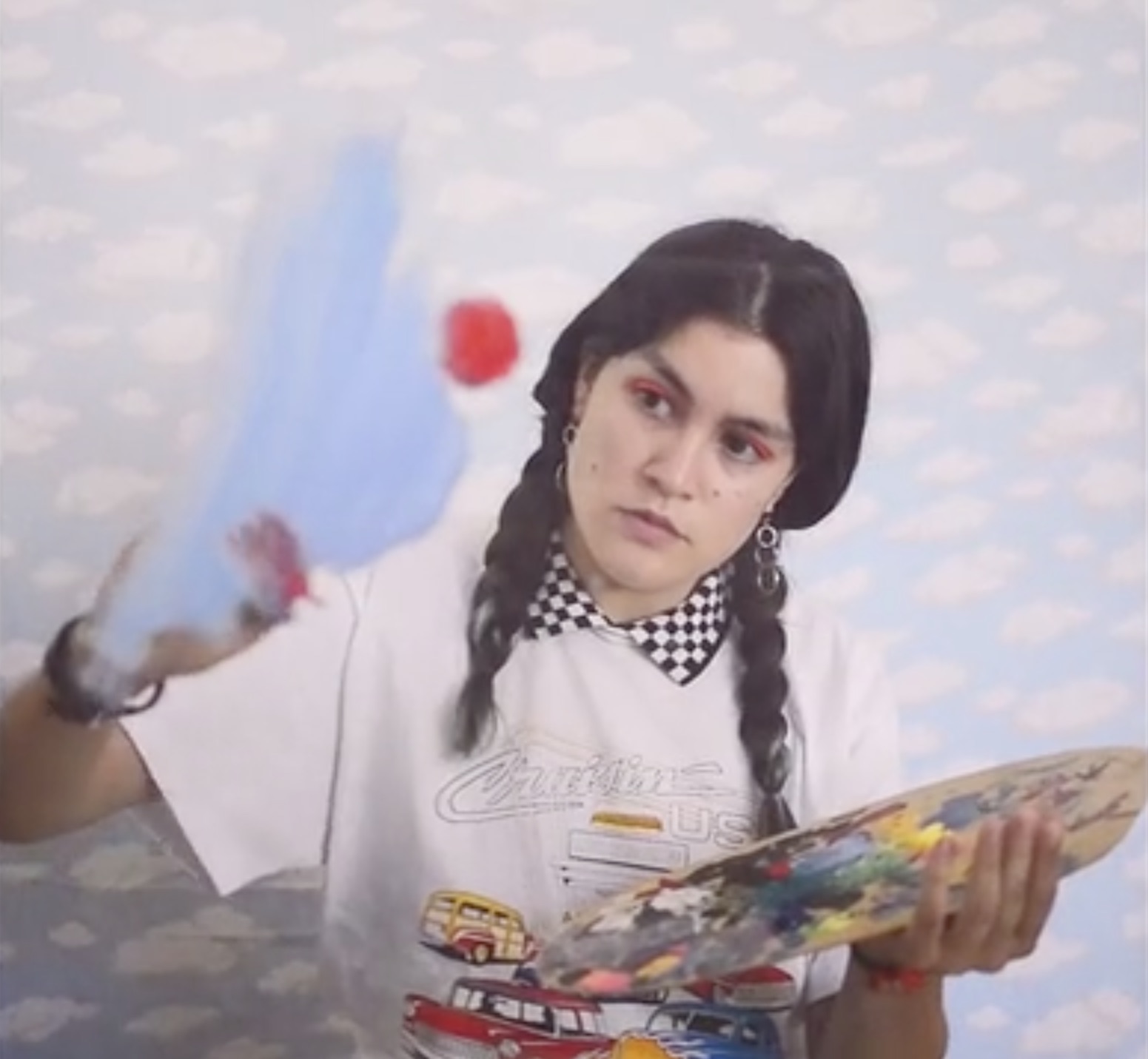
I would like to highlight the work of three artists, very aware of the differences presented by their circulation circuits. First, Melissa Lunar, of acts No. 3 and No. 10: both of them music videos that she directed. In Andy Warhol, the band Policías y Ladrones (“Police and Thieves”) sings: “You say I’m a damn snob, I say everything in me is pop” (“tú dices que soy un maldito esnob, yo digo que en mí todo es pop”). For Justo a tiempo (“Just in Time”), we see a pair of hands using small instruments of observation and measurement in order to interact with everyday objects, accompanied by lyrics about youthful and fleeting love. The light, colorful, and playful values featured in Lunar’s direction are interspersed with the fresh musical offering of two bands originally from Tijuana, expanding the possibilities of experimentation outside the wall-screen and offering the musicians a tailor-made visual accompaniment.
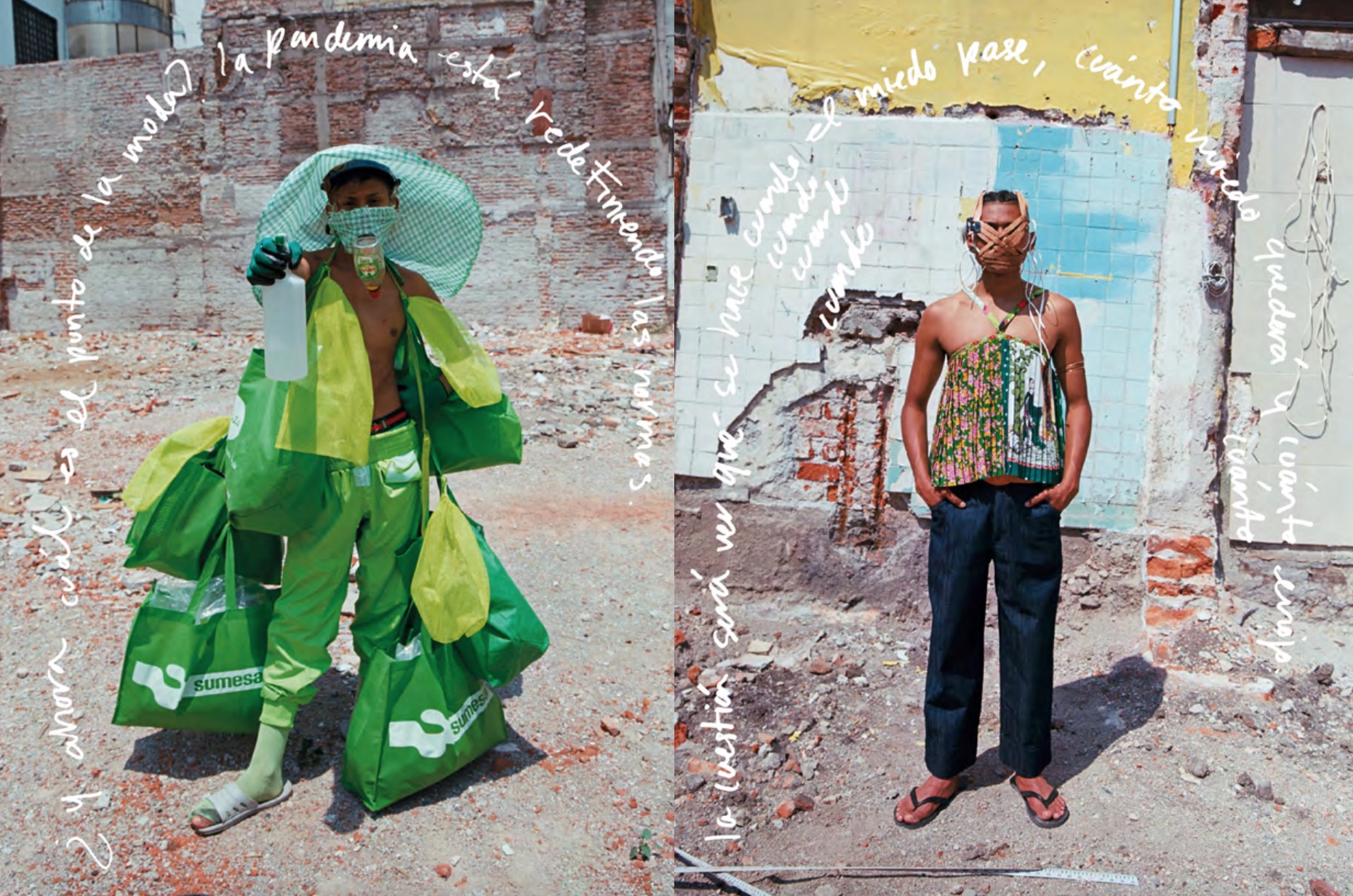

Second, Dorian Ulises López Macías, in charge of act No. 15. Dorian portrays Mr. Zero, who’s dressed in costumes that combine trash with haute couture materials. The outfits include accessories for the face that immediately refer to a dystopia in which it’s necessary to cover one’s mouth and nose. In addition to the valuable presence of a body whose skin and phenotype differs from the strict canons of the fashion industry, this series seems to indicate that the fashion photographer has a mind of their own, capable of harnessing the visual and conceptual resources of their industry in order to produce new and provocative images.
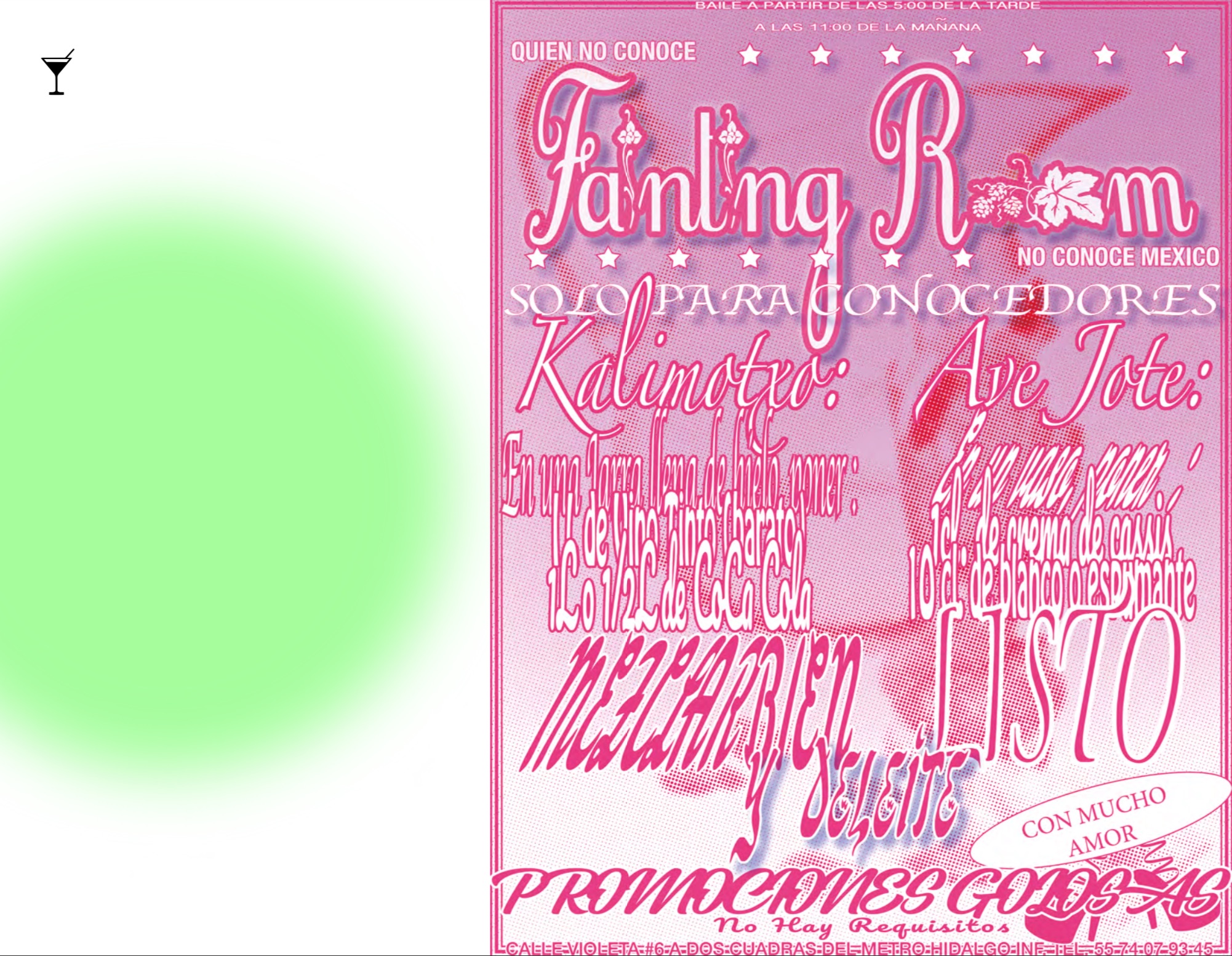
Third, Samuel Nicolle, whose work is one of the two interventions scattered throughout the document. The artist has transformed his room into a clandestine antro (club), located in Mexico City’s Colonia Guerrero. This venue offers exotic cocktails, dancing, and furtive encounters. It’s advertised through flyers that, in addition to information about the place, include recipes for preparing some of their drinks. There are six of these flyers included in the show. A little taste of the “Fainting Room” at home, in order to fantasize about a daring dance that’s not regulated by the law or the quarantine. Nicolle’s proposal lends a certain mischief to the exercise of reading-viewing the exhibition, and injects a new flavor to the condition of confinement that many of us participate in today.
Like many of the exhibitions that have opened recently, Permanencia Voluntaria is affected by multiple questions around the statutes of work and artist. In a gesture of appearance that is both mediated and chaotic, the show aims to answer such questions while contemplating the pandemic, a generational change, as well as constant transformations in the modes of production and consumption of artistic objects. I look with some suspicion (or shyness) at the extroverted nature of many of the included pieces, but it’s still viable and powerful to explore the document from home, guided by morbid curiosity.
Published on August 28 2020